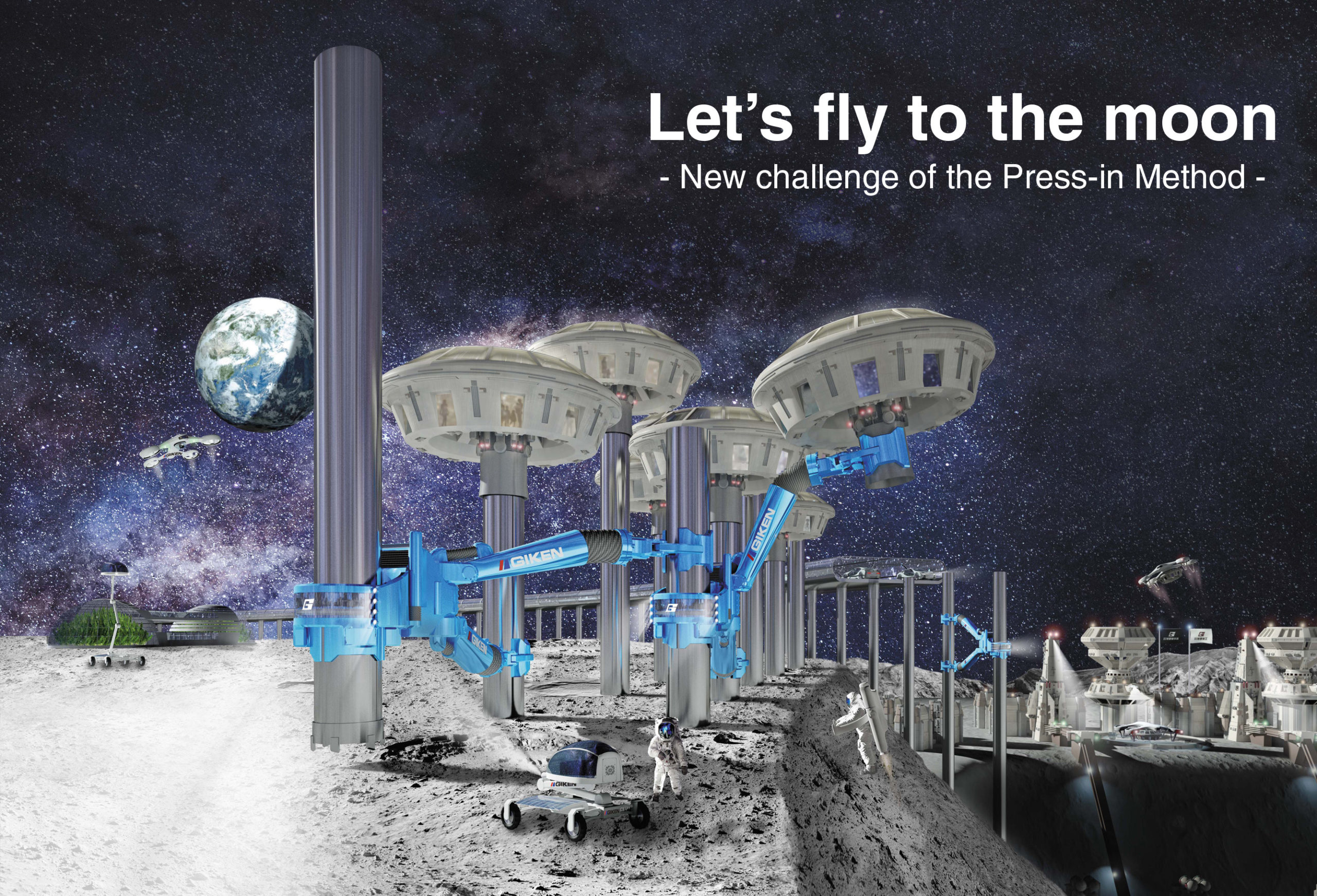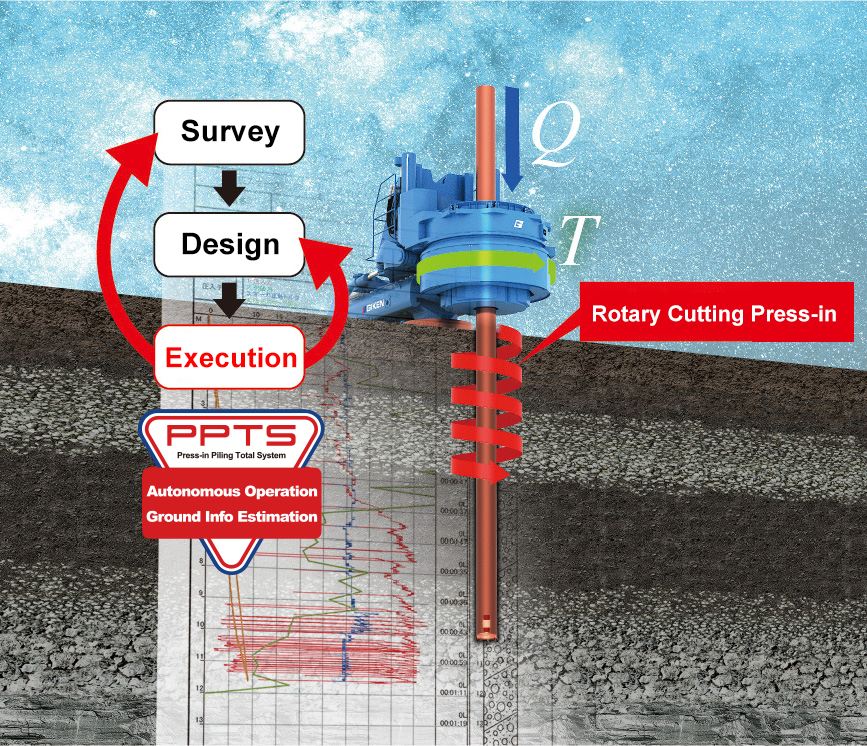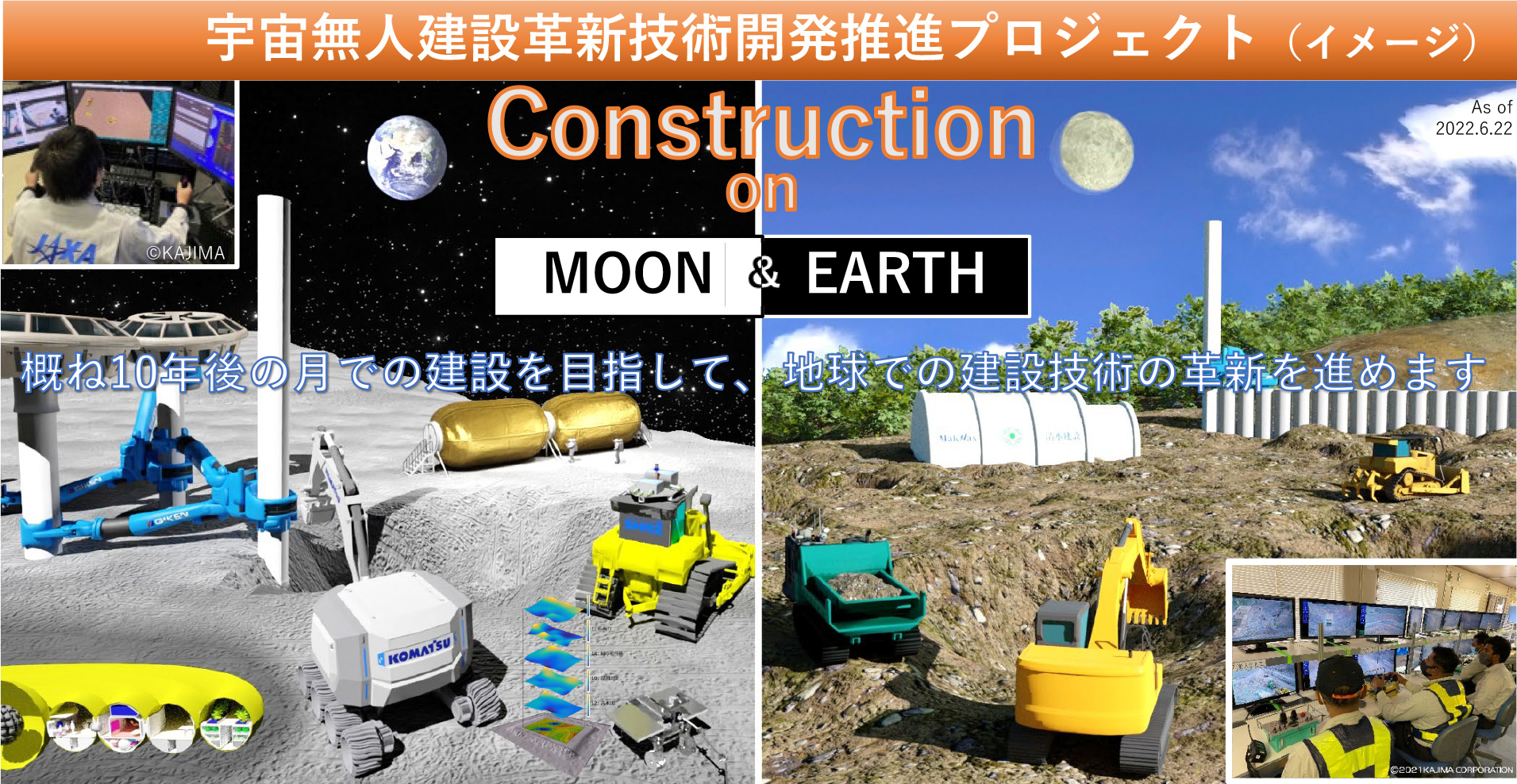GIKEN has begun developing and verifying technologies in the technology research and development stage of the Project for Promoting the Development of Innovative Technologies for Autonomous Construction, such as on the Moon, led mainly by the Ministry of Land, Infrastructure, Transport and Tourism (MLIT) in cooperation with the Ministry of Education, Culture, Sports, Science and Technology (MEXT). This project is part of the Japanese government’s Stardust Program (Strategic Program for Accelerating Research, Development and Utilization of Space Technology).

Illustration of construction on the lunar surface using the ImplantTM Method
*MLIT website in Japanese: https://www.mlit.go.jp/report/press/sogo15_hh_000326.html
Press-in Technology Also Effective in Space
SILENT PILERTM pile press-in and extraction machinery and other equipment vary from other companies’ pile drivers in that they are also able to, in principle, operate in zero-gravity environments because they do not rely on the weight of the machine for stability. This is possible because they grip piles already driven into the ground and use extraction resistance force (reaction force) to drive in the next piles. In April, GIKEN provided MLIT with findings on the effectiveness of press-in technologies, and issues with development, obtained through the previous feasibility study.
Overview of Initiatives in the Technology R&D Stage
From FY2020 to FY2025 at the latest, GIKEN will propose and evaluate rational design and build processes for construction on the lunar surface based on accumulated project data of the rotary cutting press-in method.
Normal Construction Processes from “Survey to Design to Execution”
In general, Earth-based construction projects follow 3 steps,
(1) preliminary survey (soil samplings),
(2) construction design,
(3) work execution.
Although such surveys require a lot of specialized equipment and time to study, sampling quantity is expected to be limited compared to Earth-based projects due to limitations on transportation capability to space. Besides, if unexpected ground conditions are encountered during execution, design changes may also be required.
PPT SystemTM Streamlines Operations with Three Processes Running Simultaneously
Using the Press-in Piling Total System (PPT System), if survey data is limited, information can be supplemented with ground information estimated from actual build data, and validity of design can also be considered. Additionally, even in situations like the lunar surface where survey data is extremely sparse, this system allows detailed design alongside survey and execution, so it should be possible to ensure structural performance. This will help reduce materials and equipment to be transported as well as construction time.

* More information: PPT SystemTM
Specific Initiatives
At a test field that approximates the lunar surface ground conditions, a verification build will be conducted using small-diameter piles, which reduce the amount of materials and equipment to be transported, and the Gyropress Method™* and PPT System, which handle a wide variety of ground conditions in a single machine. In addition, technologies that estimate lunar bearing capacity will also be verified. Consequently, findings will be presented on the feasibility of technologies that use actual piling data to streamline all the 3 construction processes with consideration of structure to be built and construction methodology on the lunar surface.
* More information: Gyropress Method™
Future Outlook
With very little currently known about ground conditions on the lunar surface, apart from the surface layer, ground information obtained by press-in technologies, can be used as the fundamental information when constructing a range of buildings in the future. Streamlining of design and execution processes in anticipation of construction activities in space may also lead to major improvements in Earth-based construction technologies. This project therefore has the potential to drive major innovations in the way construction is carried out.
Expanding scope from the Earth to outer space, GIKEN is looking forward to a future where SILENT PILER machines, currently in use all around the world, will play an important role on the moon and other planets.

*MLIT website in Japanese: https://www.mlit.go.jp/report/press/sogo15_hh_000326.html


